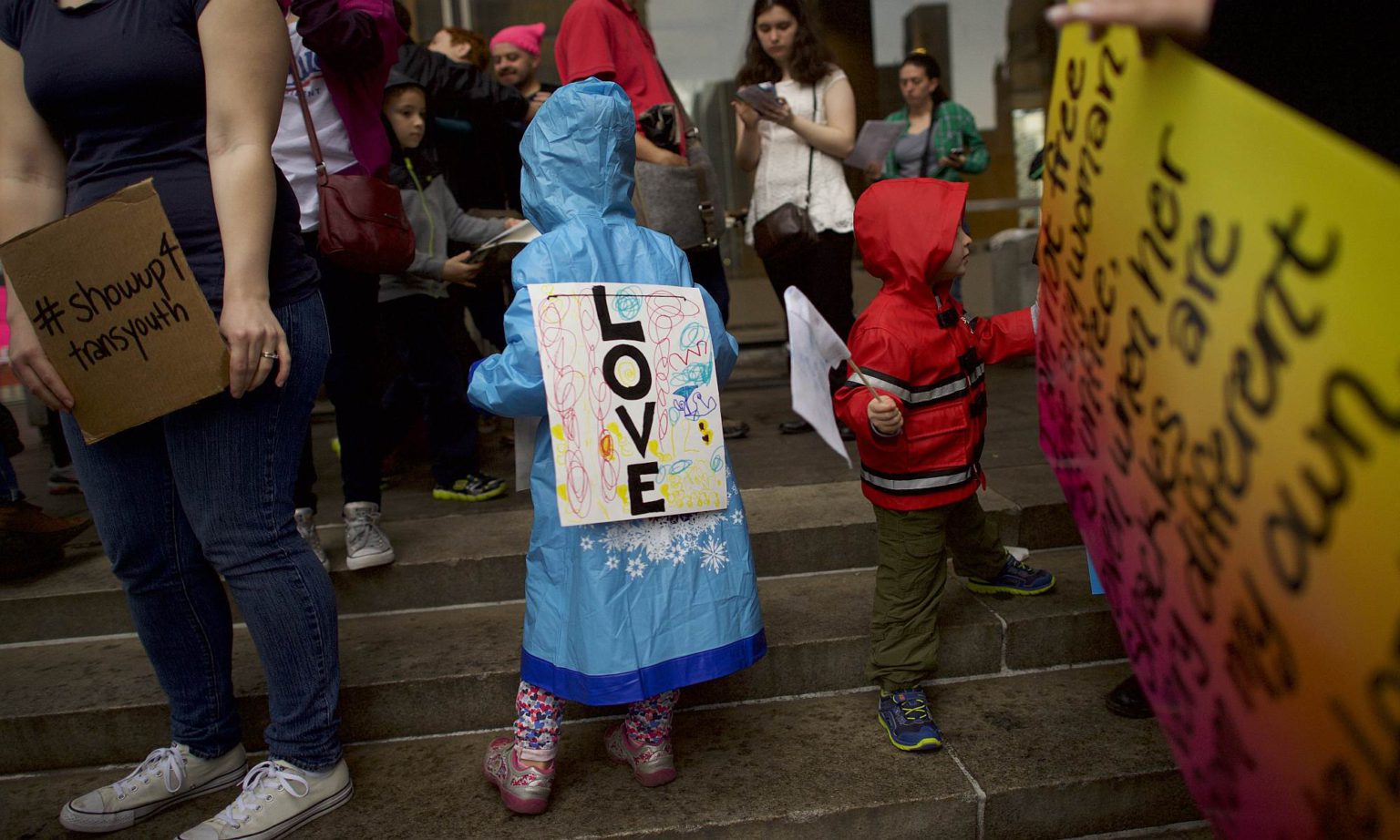
Long-read
The making of trans children
Campaigners, doctors and teachers have turned a fringe idea into a worrying reality.
Want to read spiked ad-free? Become a spiked supporter.
Should schools have gender-neutral uniforms? Should tampons be available in the boys’ toilets for pupils who were born female but now identify as male? Which changing room should transgender pupils use after PE lessons? Should parents be informed if their daughter asks to be treated as a boy at school? Should transgender children be prescribed hormones to delay the onset of puberty?
Discussion about the treatment of transgender people often focuses on the experiences of children. In part, this is because it is down to adults to determine what is in a child’s best interests, and what is best for transgender children is fiercely contested. But it is also because transgender activists make children the focus of campaigns, television programmes and teaching materials.
Children serve as a useful moral shield for transgender activists, deflecting questions and criticism. The very existence of trans children lends support to their claim that people are born with a sense of gender identity, that sometimes a male brain develops in a female body and vice versa. The figure of the trans child, now ingrained in the popular imagination, makes it seem as if transgender people have always existed. This, in turn, lends further weight to the argument that being transgender is an innate characteristic. Inventing Transgender Children and Young People, a new book edited by Michele Moore and Heather Brunskell-Evans, shatters each of the convenient myths that have built up around the transgender child.
Inventing the transgender child
Inventing Transgender Children includes contributions from academics, psychiatrists and parents, as well as young adults who transitioned as children but are now questioning the process they underwent. Together, they show that far from being an ever-present biological reality, transgenderism is an entirely invented concept with no basis in neuroscience, psychology or psychiatry. They argue that there is little evidence to support claims that brains are sexed, and no evidence whatsoever to suggest that some fetuses develop with mismatched brains and bodies. In fact, they note, ‘The idea that transgenderism is an internal, pre-social phenomenon that has existed throughout history is not an evidenced fact, but a proposition’. And far from being a long-standing proposition, it was only around five years ago that the existence of the transgender child became widely accepted.
One contributor locates the invention of transgenderism within the medical profession: ‘It became possible to conceptualise “gender identity” as dislocated from biological sex when new medical technologies for the first time made it possible for doctors to change the bodies of those born with indeterminate genitals and to assign them to a sex.’ In this way, he argues, ‘the availability of the treatment appears to have essentially created the demand’.
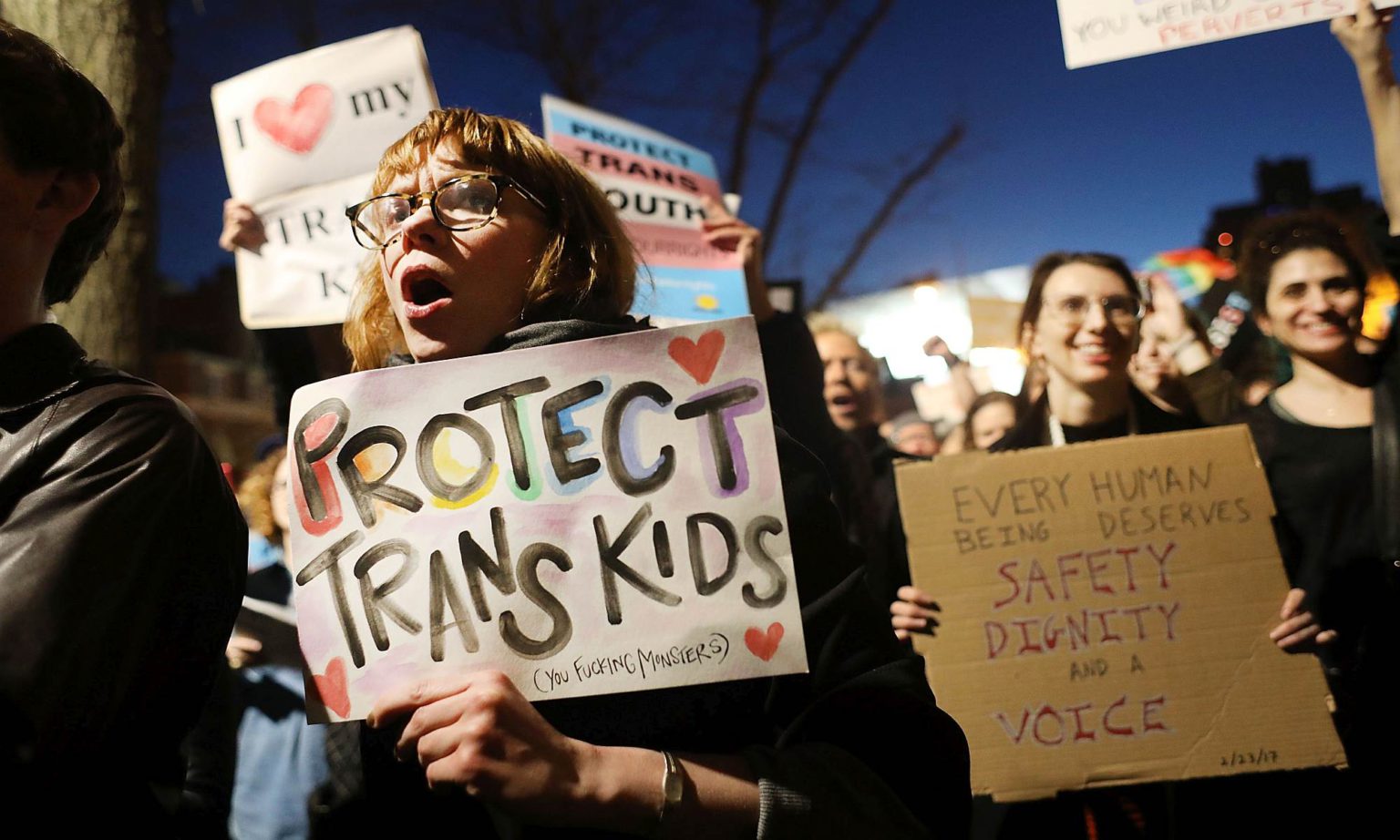
When it comes to children, Brunskell-Evans traces the formation of two distinct transgender identities over a 30-year period. The first, she suggests, ‘is that of the unfortunate victim “born in the wrong body”‘, while ‘the second is that of the revolutionary adolescent who bravely sensitises the older generation, including trained clinicians, to the subtleties, complexities and politics of gender’. These two distinct identities, victim and revolutionary, increasingly merge to form ‘the transgender child’, promoted by charities, present on YouTube and taught as part of the school curriculum.
Hiding behind children, especially children who are both victims and revolutionaries, may be useful for transgender activists intent on promoting their own ideology. But, as the contributors to Inventing Transgender Children make clear, it has devastating consequences for children, who are not only exploited by activists, but also by some teachers, doctors, social workers and psychiatrists – the very people meant to protect them from harm.
Positive affirmation
Having helped bring the transgender child into existence, some members of the medical profession now readily sing from the same hymn sheet as campaigners. They recommend one approach to transgender children above all others: positive affirmation. Or, in other words, an unquestioning acceptance that children are the gender they say they are. This approach is promoted as ‘best practice’ by schools and social workers. Parents who do not get on board and uncritically affirm their child’s new gender identity report feeling ‘marginalised and ultimately excluded from having any input into intervention planning and care’ for their own child.
Unquestioning acceptance that a child is the gender they claim to be may, at first glance, seem kind. Children enjoy all kinds of flights of fancy and, as adults, we often indulge them. But, crucially, even at the very moment we tell children about the tooth fairy we know that no such creature exists. A few years down the line, when an older and more sceptical child questions us, we confess to having been the purveyor of the coins. Yet, when it comes to gender identity, adults are instructed to lose all sense of reality. They are told not just to humour a child’s fantasies, but also to do all they can to confirm that this newly invented idea is more real than the physical presence of the child’s body.
Inventing Transgender Children details the ways in which positive affirmation harms children. For a child who is going through ‘a phase’, or is simply a little confused, affirming a new identity ‘may freeze the development of their thoughts and… consolidate confusion’. This is exacerbated by the fact that positive affirmation often leads immediately to ‘social transition’, whereby children might take on a new name, adopt the pronouns and clothing normally associated with the opposite sex, and gain access to spaces once forbidden. Thoughout this process, transgender children are not just accepted, or cared for. They are also celebrated for their bravery and challenge to convention.
Unasked questions
Social transition may then lead to medical transition including, potentially, the prescription of hormones to block puberty. Inventing Transgender Children provides a detailed account of the risks associated with puberty blockers and the lack of long-term data surrounding their efficacy. Yet, somehow, trans children are assumed to have the capacity to consent to such interventions long before they are able to purchase cigarettes or alcohol. Positive affirmation makes it more difficult for children to change their minds about their gender identity, and begin to accept the body they were born into. Climbing off the pedestal adults have put them on means denying being a brave revolutionary and admitting to being just like everyone else.
Perhaps most tragically of all, positive affirmation prevents any invesitgation into why a child may have come to see themselves as transgender. Instead of asking children how they feel about their body or their life, they are asked what type of toys they like to play with or what clothes they prefer to wear. As Roberto D’Angelo explains, ‘We do not ask what it means in the context of their particular developmental history or their current family and social context to be a man or a woman. Such questions are considered pathologising, because they appear to seek out the causes and aetiology of the child’s gendered experience, rather than accept it as an innate, “true” essence.’
Inventing Transgender Children highlights statistics showing that ‘increasing numbers of young people who identify as transgender have pre-existing mental-health problems, past trauma or troubled backgrounds’. It points out that ‘in one recent study, 10 per cent had suffered past sexual abuse… [And] 35 per cent of children referred to the Tavistock [the UK’s national gender-identity clinic for children] exhibit moderate to severe autistic traits.’ Many also believe that a proportion of transgender children would, without positive affirmation, simply grow up to be gay. One parent asks, ‘I would like someone to explain to me how a therapist who simply affirms Alex’s trans identification without trying to understand its origins is not practising gay-conversion therapy’.
Lisa Marchiano spells out many of the complex personal problems that may lead children to think they are transgender. As well as the issues detailed above, some children may have experienced bullying, or feel that they do not fit in with other children or with members of their family. Some may struggle with the stereotypical behaviour expected of their sex. But positive affirmation means these issues are neither raised nor dealt with. The child learns only that their body is the source of all their problems and changing their body will make everything better.
Contagion
Marchiano explores how various social or psychological problems may manifest in different forms in different eras. At any given point in time, selective medical symptoms are culturally legitimised and sanctioned. Women suffering from hysteria during the 19th century or anorexia in the late-20th century were experiencing mental distress, but the way this distress was expressed differed. Today, as Marchiano explains, gender dysphoria provides an acceptable cultural script for children – especially girls – to signal distress. Positive affirmation, in taking this cultural script at face value, fails to uncover deeper problems that may remain buried and untreated. Children are denied access to other forms of support, and parents, with intimate knowledge of their own child, are demonised for not accepting that gender dysphoria is the only topic under discussion.
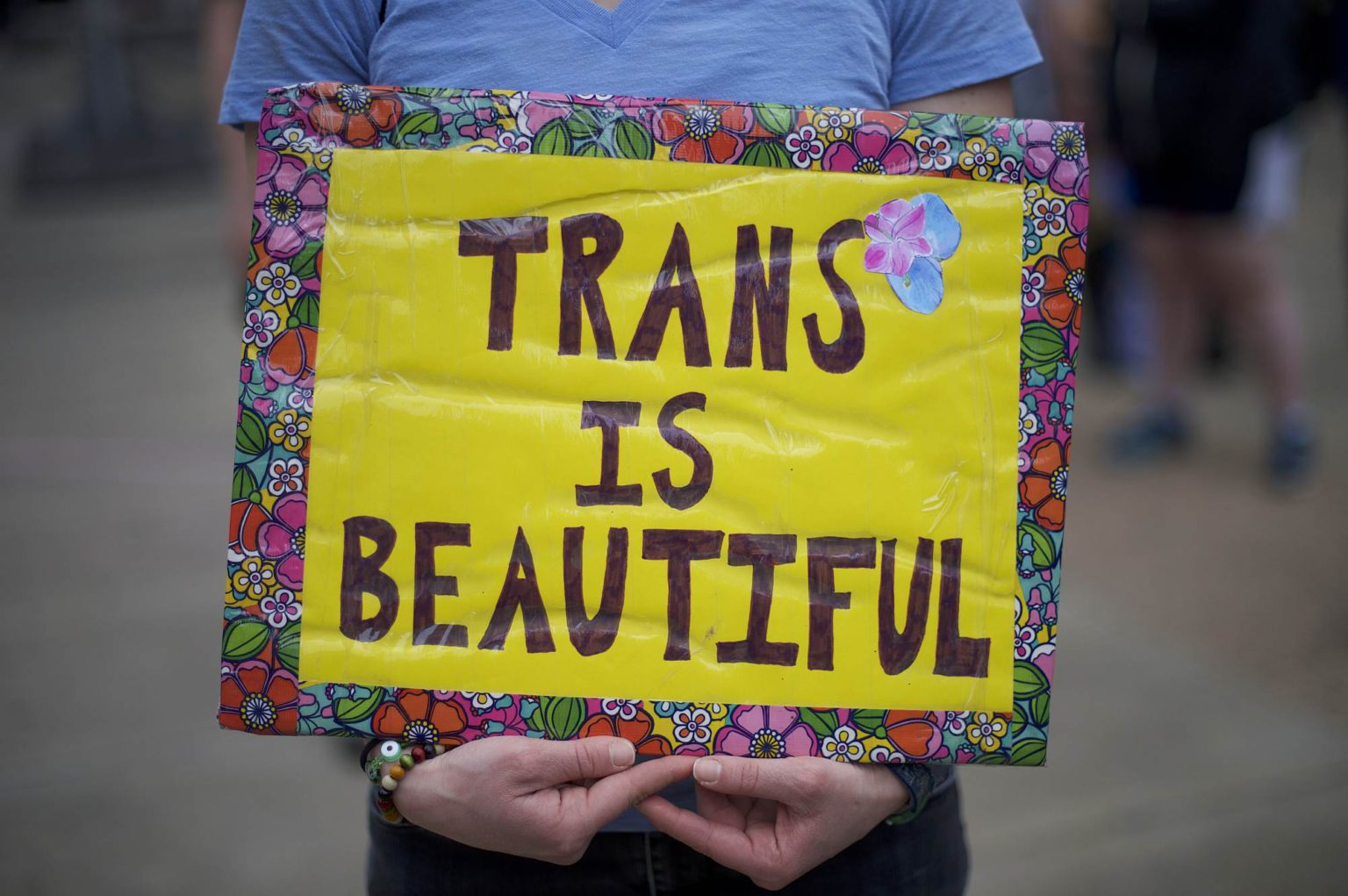
Focusing on the symptoms rather than the cause of gender dysphoria, and pushing children into an individual process of transition, also prevents broader social questions from being raised. Although the total numbers of children seeking medical support to transition is relatively small, there has been a rapid increase in referrals in recent years. What’s more, girls seeking to transition now vastly outnumber boys. Far more girls than boys exhibit signs of what’s come to be labelled as Rapid Onset Gender Dysphoria (ROGD), ‘where, far from announcing their view that they have been born in the wrong gender at a very young age, older teenagers and young adults suddenly and quickly come to identify as transgender’. Important questions need to be asked about how and why more girls than boys are affected by ROGD. Unfortunately, the orthodoxy of positive affirmation, and the prohibition on asking questions, means ROGD remains a poorly understood phenomenon.
Marchiano explores the possibility of ‘contagion’, whereby children ‘catch’ the idea that they may be transgender from other people. She highlights 19th-century ‘medical celebrity’ Jean-Martin Charcot, who diagnosed hysteria as having a biological cause and evangelised his findings through dramatic and well-attended lectures. Charcot would perform live diagnoses of hysteria, although, as others have since noted, it was likely he was stimulating symptoms through suggestion. Marchiano argues that today’s equivalent, the viral YouTube clip, is a far more effective form of contagion, because it can reach a much wider audience and be watched by young children in the privacy of their bedrooms. In this way, children who already feel troubled become radicalised online. Being transgender provides them with a readymade community to join, and a sense of identity that offers a seemingly straightforward explanation for their problems. In turn, as Michele Moore notes, ‘instructions gleaned on the internet help construct the child’s invention of themselves as transgender’.
YouTube celebrities may instruct troubled teenage girls on how to be transgender, but this would be little more than a passing fad without schools, social workers, health professionals, therapists and the mainstream media confirming this newfound identity, and glamourising those who attain its exalted status. This further fuels the contagion.
Where are the adults?
Inventing Transgender Children offers crucial insights into why growing numbers of children are coming to see themselves as transgender, and the potentially damaging consequences this has for some of the most vulnerable members of our society. It is a vital intervention, and should be disseminated widely.
At the end, however, one question, for me at least, remains unanswered: why are we allowing this to happen? Why have so many apparently ‘caring’ adults been happy to cheer all this on? In the concluding chapter, Stephanie Davies-Arai and Susan Matthews offer a number of suggestions, from a taboo on homosexuality to a politically motivated drive to ‘convince girls from an early age to believe that “woman” is an identity they can choose and that some women have penises’, in order to ‘prevent the development of a feminist political consciousness’.
Two broader social trends, felt on every page of Inventing Transgender Children, are also worth exploring. The first is an identity-driven cult of victimhood, where social hierarchies are constructed, and those deemed to have suffered most, simply because of who they are, are placed on the top. The second is the problem adults currently have with socialising children. Some adults consciously reject this role, while others have their capacity to act persistently undermined. The result, in both cases, is that rather than assuming responsibility for children’s development, adults deny they have any authority, suspend disbelief and act upon the child’s wishes. The beatification of the militant child victim who must instruct adults in the correct way to behave is detrimental to the future of society. And it’s devastating for the children thrust into this position.
Joanna Williams is currently researching the impact of changing attitudes towards sex and gender in her role as director of the Freedom, Democracy and Victimhood Project at the think tank, Civitas.
Inventing Transgender Children and Young People, by Heather Brunskell-Evans and Michele Moore (eds), is published by Cambridge Scholars Publishing. (Buy this book from Amazon(UK).)
Picture by: Getty.
Who funds spiked? You do
We are funded by you. And in this era of cancel culture and advertiser boycotts, we rely on your donations more than ever. Seventy per cent of our revenue comes from our readers’ donations – the vast majority giving just £5 per month. If you make a regular donation – of £5 a month or £50 a year – you can become a and enjoy:
–Ad-free reading
–Exclusive events
–Access to our comments section
It’s the best way to keep spiked going – and growing. Thank you!

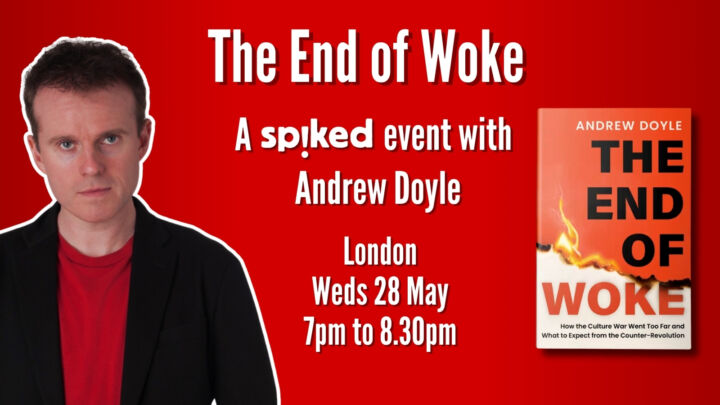

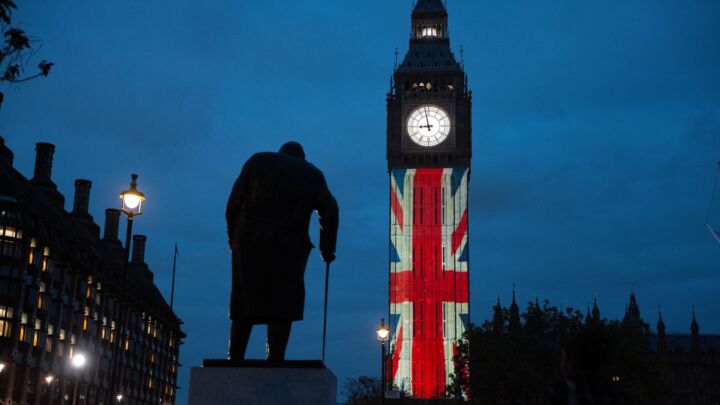


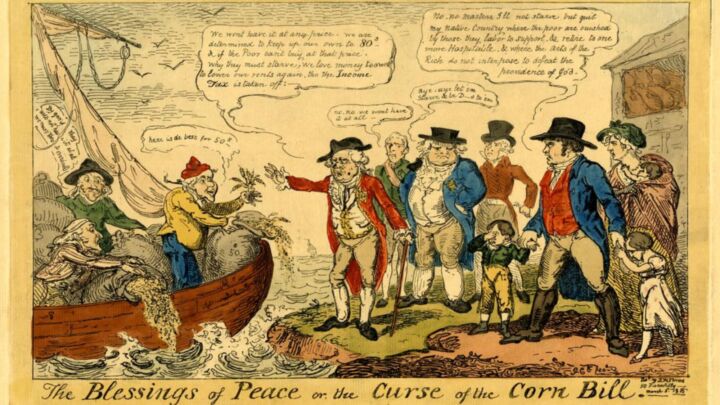
Comments
Want to join the conversation?
Only spiked supporters and patrons, who donate regularly to us, can comment on our articles.